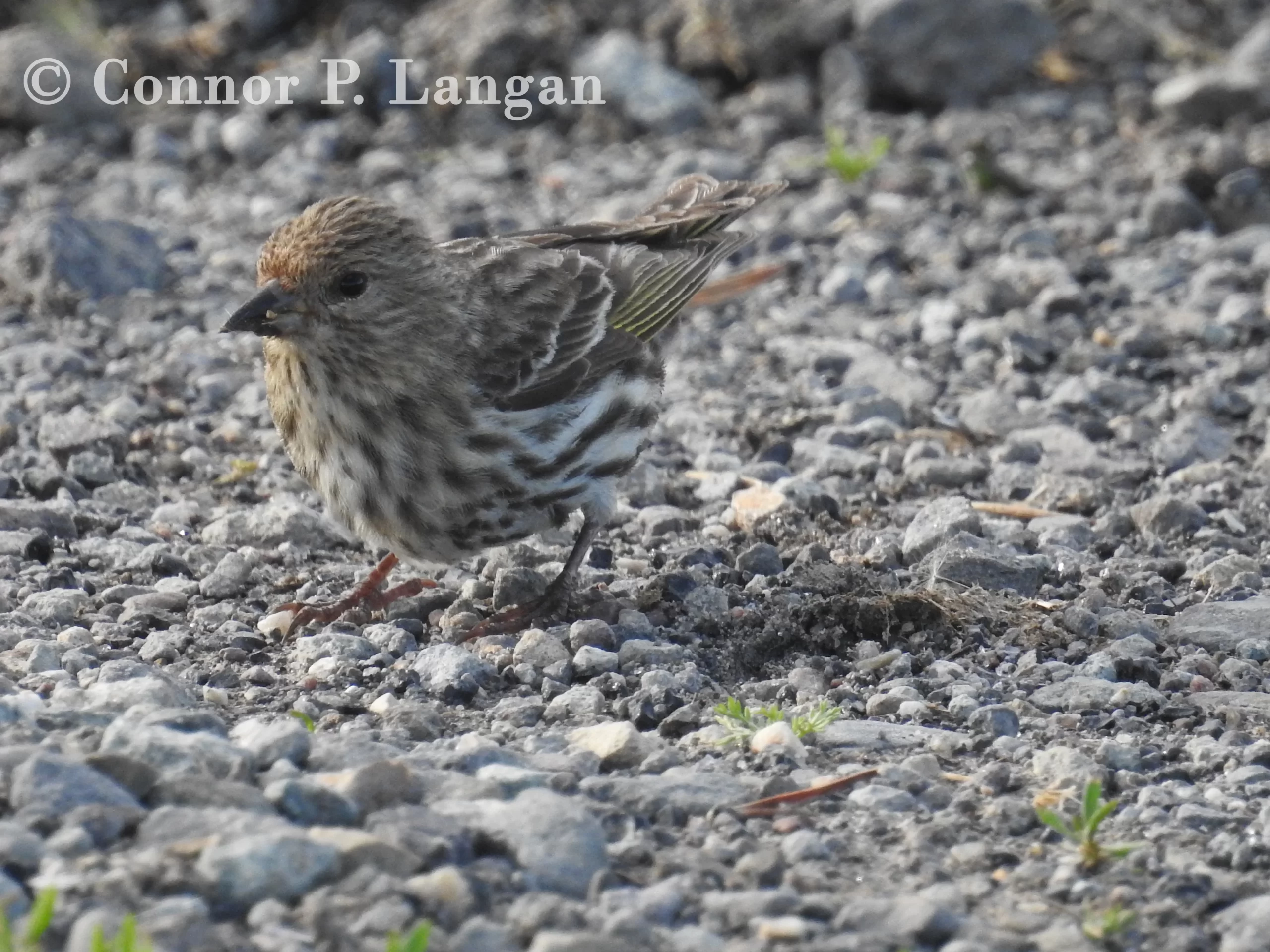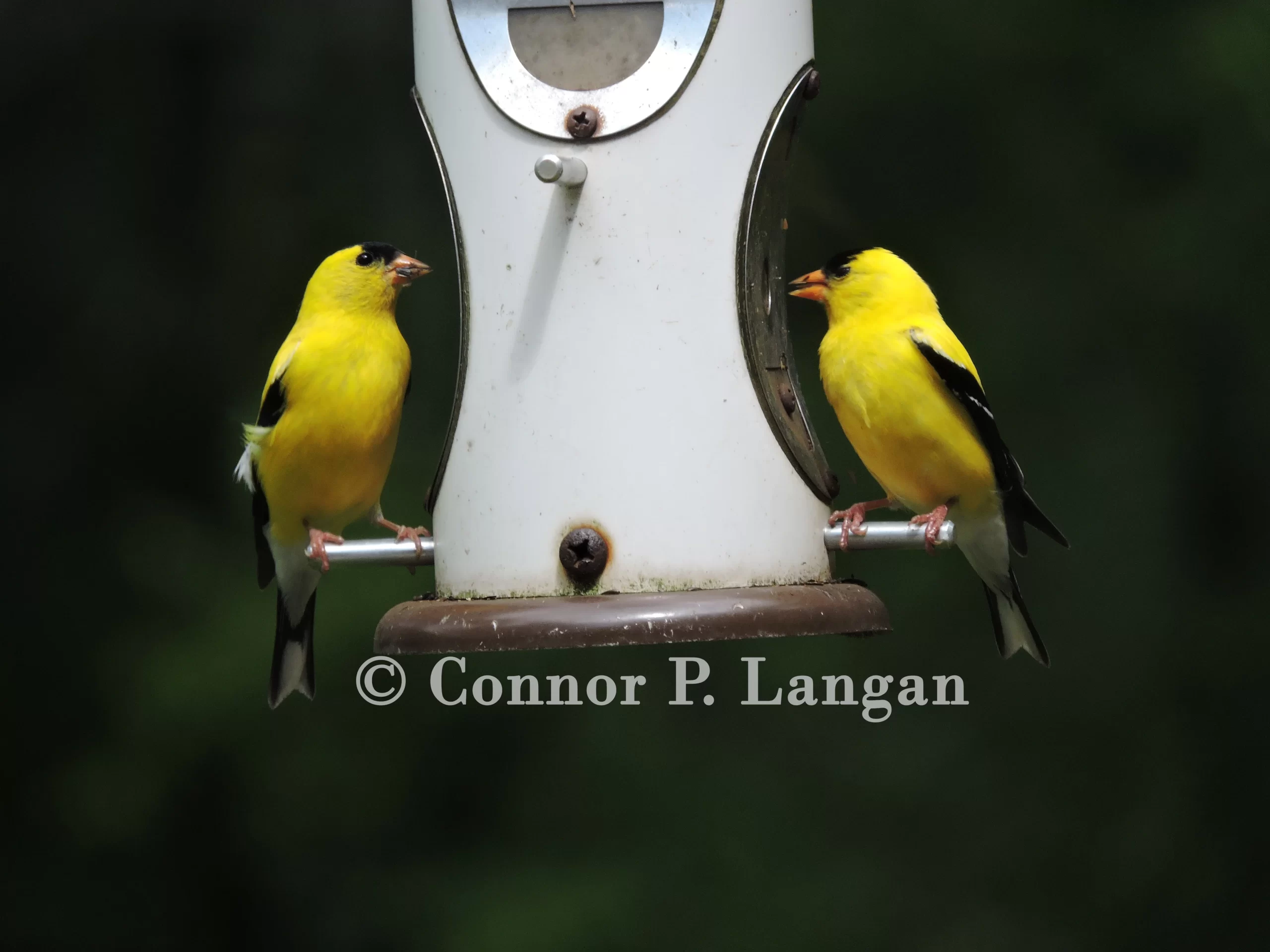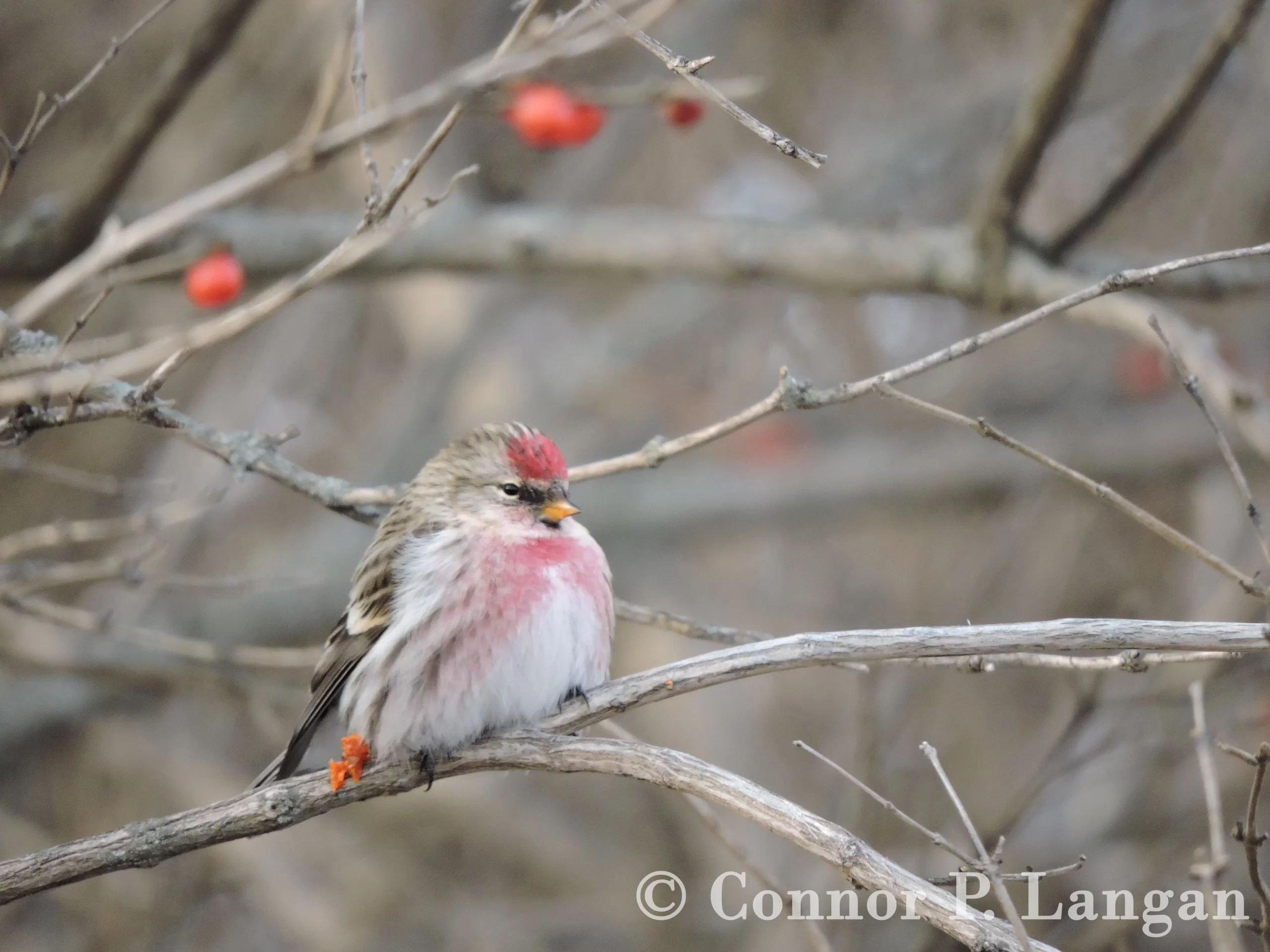Description
Pine Siskins are tiny finches with small, conical bills and short tails with noticeable notches. Three distinct Pine Siskin species exist, with birds being effectively sexually monomorphic in two of the three subspecies.
These birds measure anywhere from 4.3 to 5.5 inches long, while Pine Siskins may weigh 0.4 to 0.6 ounces.
The Northern subspecies of Pine Siskin is abundant the most common subspecies of Pine Siskin. Males and females both have light-colored undersides that are heavily streaked by dark markings. Northern Pine Siskins have brown backs, dark wings that have yellow streaks, and yellow and black tails. These birds have plain faces with faint, pale supercilia.
Immature Northern Pine Siskins look similar to adults, but they tend to have heavy streaking on both their backs and undersides.
The green morph of Pine Siskin is rarely encountered, but these birds are always an impressive sight when they are spotted. Green morph Pine Siskins have green necks, backs, flanks, and crowns. They have pale gray undersides with a fair amount of streaking, and their wings and tails are black and yellow.
The Chiapas subspecies of Pine Siskin scarcely looks similar to the other two subspecies. This subspecies is sexually dimorphic, with males and females having different plumages.
Male Chiapas Pine Siskins have black crowns, gray necks and undersides, and wings and tails that are a mix of yellow, black, and green. Female Chiapas Pine Siskins are a gray-brown mix overall with streaked backs and undersides. Females have yellow and black wings and tails.
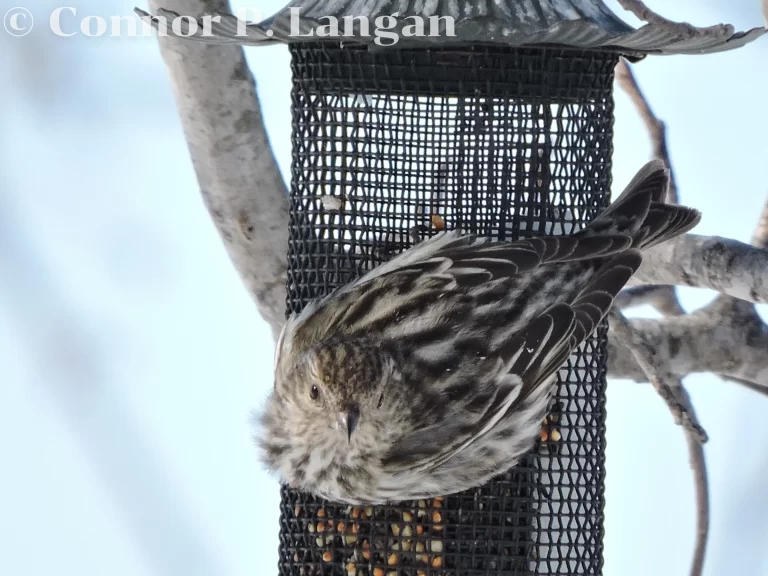
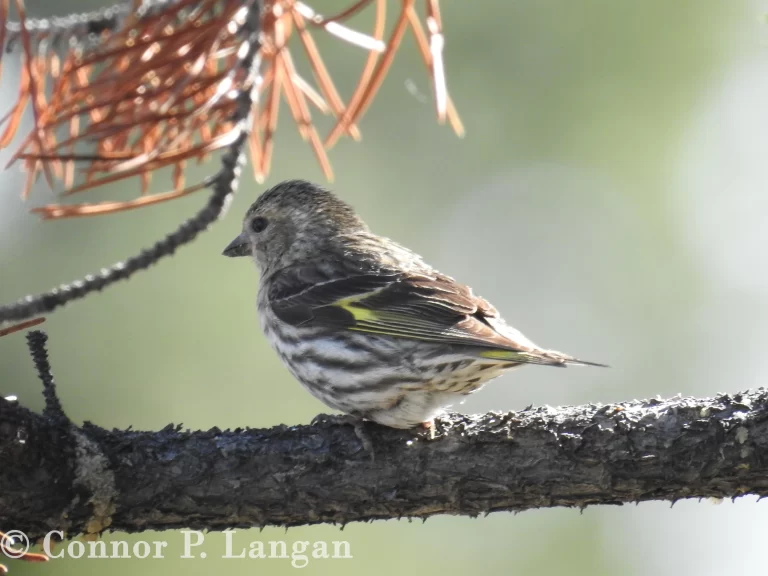
Behavior
Pine Siskins are social, calm birds that enjoy the presence of other Pine Siskins no matter the time of year. While most birds become territorial during the breeding season, Pine Siskins accept the presence of other Pine Siskins at this time of year. This species may even construct a nest in loose colonies with other Pine Siskins.
In the nonbreeding season, Pine Siskins form groups with other Pine Siskins and fly around in search of food. Pine Siskins are nomadic, traveling wherever food can be found.
Diet
Unsurprisingly, Pine Siskins enjoy consuming a variety of seeds including pine cones, but this species will also eat the buds off of trees and insects. Pine Siskins are happy to visit bird feeders and consume small seeds like thistle and nyjer.
Habitat
Pine Siskins will seek out habitats with conifers for nesting locations during the breeding season. They may breed in coniferous forests, but they have also adapted to breed in the conifers in suburban yards and cemeteries.
During the nonbreeding season, Pine Siskins can be found in a wide array of habitats as they search for food. Look for Pine Siskins in coniferous forests, parks, ditches, marshes, fallow fields, and even grasslands.
Range
The Northern subspecies of Pine Siskin can be found throughout much of North America, being present from Alaska to central Mexico and most places in between. Northern Pine Siskins vacate the northern reaches of their territory during the winter, traveling south in search of food.
Northern Pine Siskins are year-round residents throughout much of the American West, southern Canada, the Upper Midwest, and the mountainous regions of Mexico. These birds travel to the Midwest, East Coast, American Southeast, and parts of Mexico during the winter.
Green morph Pine Siskins occupy much of the same territory as Northern Pine Siskins, but they are far rarer.
Chiapas Pine Siskins are isolated from the rest of the Pine Siskin population, occupying a small portion of southern Mexico and western Guatemala.
Breeding
Pine Siskins are monogamous by nature, with pairs forming during the breeding season.
Females build the nest without help from the male, though males may help to provide nesting material. The process of building a nest takes the female around 5 days to complete. Nests are placed in locations that are easily hidden in conifers.
Nests have a saucer shape as they are constructed from grasses, branches, bark, and other plant fibers. Females line the interior of the nest with soft materials like fur, feathers, and lichens.
Females produce 1 to 2 broods of eggs each year, with each clutch containing 3 to 5 eggs. Male Pine Siskins deliver food to the female while she is sitting on the nest and incubating the eggs or warming the nestlings. It takes just shy of 2 weeks for the eggs to hatch, while the nestlings leave the nest around 2 more weeks after hatching.
Backyard Birding
Pine Siskins are regular visitors to backyards that offer tube feeders filled with small seeds. Though these finches prefer to consume smaller seeds, they will eat larger seeds and suet on occasion.
Pine Siskins will not nest in birdhouses, but they may construct a nest in a conifer in your backyard.
Population Status
Pine Siskin populations have not fared well over the past half-century, with this species losing almost 70% of its total population. A global population of around 46 million Pine Siskins are estimated to exist today.

